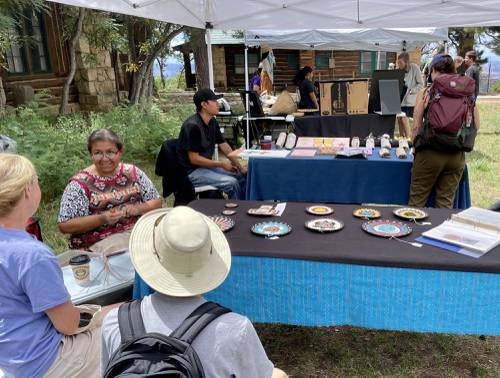
FAQ About The Influence of Native American Storytelling on Western Narratives

What is Native American storytelling?
Native American storytelling encompasses a rich tradition that includes myths, legends, and oral histories passed down through generations among Native American tribes. These stories often serve cultural, educational, and spiritual purposes, encapsulating the beliefs, values, and lessons important to each community. Storytelling is a way of preserving history, teaching ethics, and entertaining the community, with each tribe possessing its distinct narratives and storytelling styles.

How has Native American storytelling influenced Western literature?
Native American storytelling has significantly influenced Western literature by introducing themes of respect for nature, interconnectedness, and spirituality. Many Western authors have drawn inspiration from the rich mythologies, characters, and narrative styles of Native American stories. This influence is evident in the works of authors like Gary Snyder and Leslie Marmon Silko, who incorporate Native storytelling techniques and themes into their novels and poetry.

Can you provide examples of Native American stories influencing modern films?
Elements of Native American storytelling have appeared in modern films by integrating themes of nature, community, and mythology. Movies such as Disney's Pocahontas and Avatar reflect Native American influences through their focus on ecological harmony and the spiritual connection between characters and the environment. Additionally, filmmakers often draw from Native American myths to create intricate and culturally rich narratives.

What are some common themes in Native American storytelling?
Common themes in Native American storytelling include the interconnectedness of all living things, respect for nature, the importance of community and family, along with lessons about morality and balance. Many stories incorporate animals as central characters, symbolizing various human traits and fostering understanding of the natural world. Additionally, spiritual elements often interwoven into these narratives highlight the deep-rooted cultural beliefs of Native communities.

In what ways have Native American oral traditions been preserved in Western narratives?
Native American oral traditions have been preserved in Western narratives by being adapted and integrated into literature, film, and other media forms. Some Western authors respect these traditions by faithfully representing Native themes and storytelling techniques, while educators and cultural historians have recorded these oral histories to ensure their survival. Efforts in media and literature to highlight indigenous perspectives also support preserving these traditions.

What role do animals play in Native American stories, and how is this seen in Western narratives?
In Native American stories, animals often serve as symbols or guides, representing various human attributes or spiritual messages. This symbolic use of animals has permeated Western narratives, where animals frequently appear as character analogs or provide moral guidance, as seen in literature like White Fang by Jack London. These stories often convey lessons about respect for all beings, echoing traditional Native American views.

How do Native American narratives typically convey moral lessons?
Native American narratives convey moral lessons through allegorical storytelling, using characters, often animals, to symbolize moral or ethical dilemmas and resolutions. These stories are crafted to reinforce communal values, respect for nature, and balance between the human and spiritual worlds. The use of metaphor and symbolism allows listeners to engage with the story on a deeper level, extracting personal and communal lessons.

Are there any notable Western authors known for incorporating Native American storytelling elements?
Yes, several Western authors are noted for weaving Native American storytelling elements into their works. Leslie Marmon Silko is a prominent figure, known for integrating Native themes and oral traditions into her novels, such as Ceremony. Another author, N. Scott Momaday, incorporates his Kiowa heritage into his literature, bridging Native traditions with Western literary forms. These authors and others draw upon Native American storytelling to enrich their narratives.

What impact did Native American storytelling have on the concept of the hero's journey in Western literature?
Native American storytelling has impacted the concept of the hero's journey by emphasizing the importance of community, spiritual growth, and connection to nature as critical components of a hero's path. Traditional Native narratives often feature protagonists who gain wisdom through harmony with the natural world, contrasting with the individualistic approach typically seen in Western hero narratives. This alternative perspective has contributed to a broader understanding of heroism in Western literature.

How have Western media representations sometimes misinterpreted Native American storytelling?
Western media representations have occasionally misinterpreted Native American storytelling by oversimplifying or stereotyping the complex, nuanced narratives and characters found in Native traditions. These misinterpretations can lead to cultural appropriation or the propagation of inaccuracies, failing to capture the depth of spiritual and communal elements. It is crucial for creators to consult with Native communities and understand these stories' cultural significance before adapting them.

Why is it important to preserve Native American storytelling traditions?
Preserving Native American storytelling traditions is vital for maintaining cultural identity, heritage, and wisdom. These stories offer invaluable insights into indigenous worldviews, morals, and histories, contributing to the diversity of human expression. Furthermore, storytelling is a key aspect of cultural continuity, enabling Native American communities to pass down knowledge, uphold traditions, and strengthen communal bonds across generations.

How does Native American storytelling differ from Western storytelling?
Native American storytelling often differs from Western storytelling in its focus, structure, and purpose. While Western narratives may prioritize linear plots and individualistic themes, Native American stories typically emphasize cyclical patterns, communal values, and a deep connection to nature and spirituality. The oral tradition also plays a crucial role in the fluid, evolving nature of Native storytelling, contrasting with the fixed nature of many written Western texts.

What is the significance of nature in Native American narratives?
Nature holds a profound significance in Native American narratives, often depicted as a living, breathing entity closely interwoven with human life and spirituality. Stories frequently highlight the delicate balance between humans and the environment, emphasizing respect, sustainability, and interconnectedness. This portrayal of nature as both a setting and a character influences many Western narratives by offering alternative views on humanity's relationship with the natural world.

What are some misconceptions about Native American storytelling?
Common misconceptions about Native American storytelling include the belief that these stories are simplistic or solely mythological. In reality, they are complex narratives with rich spiritual, moral, and historical layers, serving as foundational cultural elements. Another misconception is that all tribes share the same stories; however, each tribe has distinct narratives reflecting their unique traditions, environments, and histories.

How have Native American storytelling elements influenced Western animation?
Native American storytelling elements have influenced Western animation by introducing rich cultural narratives, themes of nature, and moral storytelling. Animated films and series often draw on Native motifs and themes, as evidenced by movies like Pocahontas or the series Spirit: Stallion of the Cimarron, which incorporate themes of interconnectedness and respect for nature. These influences enrich the storylines and broaden representation in animated media.

In what ways do Native American and Western stories converge?
Native American and Western stories converge in their shared use of universal themes, such as the journey of self-discovery, the triumph of good over evil, and the exploration of moral and ethical questions. Despite differing cultural contexts and storytelling structures, both traditions emphasize human experience and emotion, providing a common ground for narratives that appeal to a wide range of audiences.

How have Native American storytelling practices been adapted in Western video games?
The influence of Native American storytelling practices in Western video games is seen through the integration of themes like interconnectedness with nature, spirituality, and communal values. Games such as Never Alone (Kisima Ingitchuna) and Assassin’s Creed III incorporate indigenous storytelling elements, enhancing narrative depth and cultural authenticity. These games use Native perspectives to offer players unique experiences and insights into indigenous worldviews.

What storytelling techniques from Native American traditions are used in Western narratives?
Western narratives incorporate several storytelling techniques from Native American traditions, such as the use of mythical creatures, cyclical plot structures, and moral allegories. Techniques like oral storytelling influence narrative styles in literature and film, producing immersive and engaging stories. Symbolism and metaphors derived from Native tales enrich Western narratives, offering diverse perspectives and richer character development.

How did Native American storytelling influence the development of fantasy genres in Western literature?
Native American storytelling has influenced the development of fantasy genres in Western literature by contributing unique mythologies, characters, and themes of nature and spirituality. These elements introduce alternative world-building possibilities and narrative approaches. Fantasy authors often draw from the vivid imagery and symbolic complexity found in Native stories, blending these with Western mythological frameworks to create new, culturally diverse fantasy worlds.

What impact does Native American storytelling have on contemporary understanding of history and culture?
Native American storytelling profoundly impacts contemporary understanding of history and culture by offering alternative narratives that highlight indigenous experiences and perspectives. These stories challenge dominant historical narratives, shedding light on the richness of Native cultures and their contributions to broader societal developments. By integrating these perspectives into contemporary discourse, they foster greater cultural awareness and appreciation.
